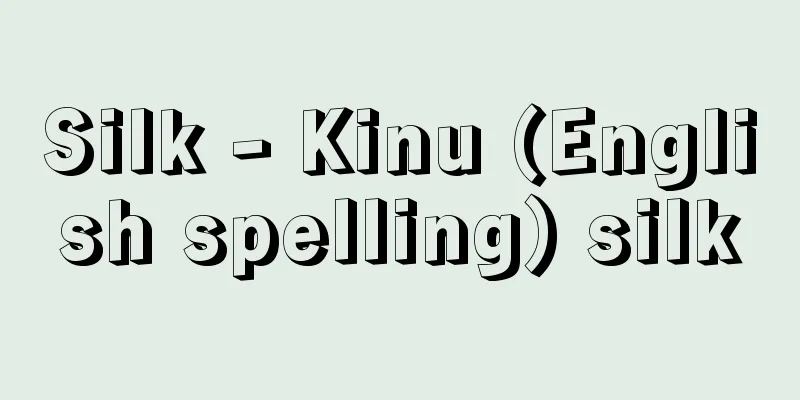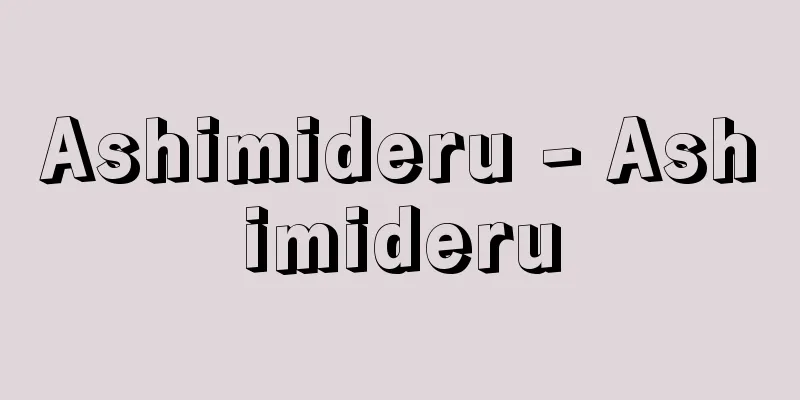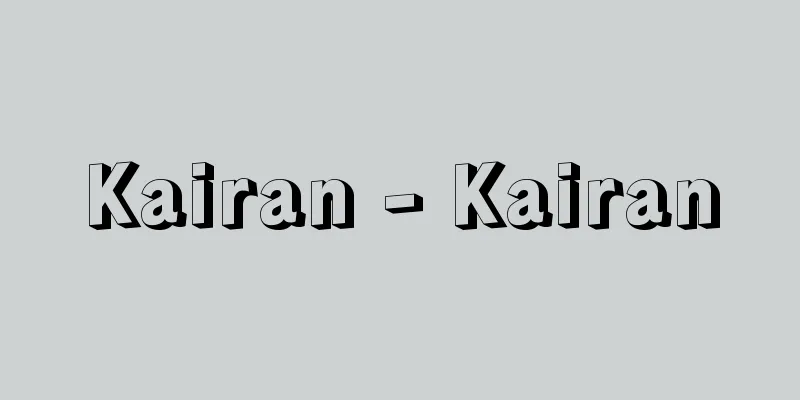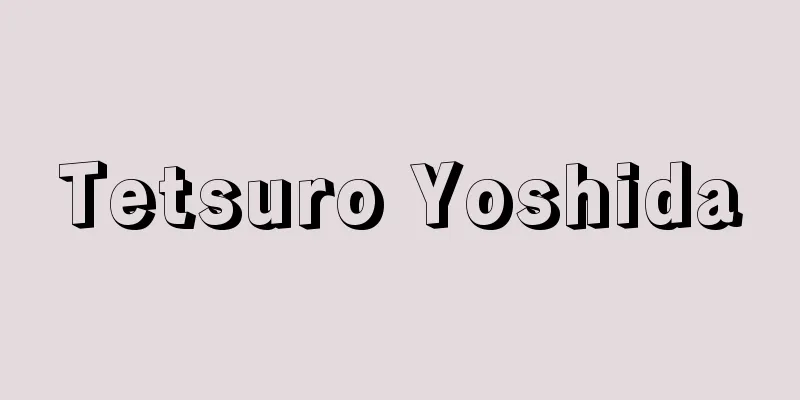Silk - Kinu (English spelling) silk

|
Silkworms are the larvae of the silk moth, which are the main insects that produce silk. Silkworms are the main insects that produce silk. Silkworms are the main insects that produce silk. Silkworms are the main insects that produce silk. Silkworms are the main insects that produce silk. The history of silk production and weaving dates back to ancient times, but no clear traditions remain. The industry began in China, with records dating back to the mid-3rd millennium BC. For a long time, China kept its raw materials and manufacturing methods top secret, but after 1000 BC, trade in silk fabrics with other countries began, and within a few centuries, caravans regularly transported silk to India, Central Asia, and Persia. It is believed that sericulture, along with silk, was introduced overland from China to India around 140 BC, and in the 2nd century, India exported domestic raw silk and silk fabrics to Persia by ship. A few centuries later, Japan also acquired the technology of sericulture and was successful. Under the Parthian Empire (247 BC-224 AD), Persia became the center of silk trade between the East and the West. Silk dyeing and spinning developed in Syria, Egypt, Greece, and Rome. Craftsmen also used raw silk from the Orient, but most of it was disassembled and used from silk fabrics brought from the Orient. The silk-making process was still a mystery in Asia at the time. Eventually, the demand for locally produced raw silk increased throughout the Mediterranean region. The Byzantine Emperor Justinian I (reigned 527-565) persuaded two Persian monks living in China to hide silkworm moth larvae in hollow bamboo canes and bring them back to Constantinople in 550. A small number of live larvae spread, and became the basis of European sericulture until the 19th century. Silk production flourished in Europe for several centuries, especially in the autonomous cities of Italy and, from 1480 onwards, in France. In 1854, an epidemic spread among silkworm moths, and in 1865 Pasteur was asked to research the cause and develop a means of control. The silk industry in Italy recovered, but not in France. Meanwhile, Japan modernized sericulture and came to supply most of the world's raw silk. After World War II, synthetic fibers such as nylon were used to make socks and other clothing, and the silk industry declined significantly. However, silk remains highly valued as a luxury item, and it remains an important product in Japan, Korea, and Thailand. Silk production involves raising silkworm moths from eggs to cocoons and cultivating mulberry trees to feed the larvae. Silkworm moth larvae release continuous fibers (long fibers) about 600 to 900 meters long, which they then enclose in a cocoon. When they become adults, they break out of the cocoon and are killed by steaming or exposing them to hot air. The raw silk threads that are reeled out of the cocoons are made up of two fibroin strands wrapped in a membrane of colloidal sericin. The sericin that binds the threads is dissolved, the ends of the fibers are found, and several cocoons are reeled in or reeled together. Threads that are too thin are twisted together during the reeling and twisting stages to make thick, strong raw silk. Various raw silk threads are produced depending on the amount of thread and the direction of twist. Sericin serves as a protective layer during the manufacturing process and is usually removed by boiling in soapy water during the fiberization stage. This process is called the refining of raw silk, and silk that has been refined to leave only fibroin is called refining silk. Silk made by twisting together broken cocoons or short fibers cut during the manufacturing process is called spun silk. The thickness of silk thread is expressed in denier (1 denier is 450 m long and weighs 50 mg). It may be treated with finishing agents such as metal salts to add weight and pleats. When sericin is removed, silk becomes a soft, glossy, translucent thread that is 30% lighter, has a smooth surface, and is less susceptible to dirt. Silk can withstand a weight of up to 4 g per denier, and its strength decreases by about 15% to 25% when wet. Silk fibers can stretch up to about 20%, but it is difficult to return to its original shape if stretched more than 2%. It is coarser in density than cotton, wool, and rayon, and has good water absorption. It does not feel damp even if it absorbs moisture up to one-third of its weight, making it very suitable for dyeing. It is more heat resistant than wool, and decomposes at about 170°C. If left in poor storage conditions for a long time, it will lose its strength, and if exposed to sunlight for a long time it will easily deteriorate, but it rarely becomes moldy. It is resistant to weak alkaline solutions and normal dry cleaning solvents. When dry, friction can easily cause static electricity. The so-called rustling sound or tearing sound that is associated with taut silk fabric is caused by the processing process, and it is a mistake to consider this an inherent characteristic of silk fabric. Source: Encyclopaedia Britannica Concise Encyclopedia About Encyclopaedia Britannica Concise Encyclopedia Information |
|
昆虫が繭の生成時に排出する生物繊維から得られる繊維原料および製品で,商品化されるものは主としてカイコガの幼虫 (蚕) のものに限られる。 絹の生産と織物の歴史は古代にまでさかのぼるが,はっきりした伝承は残っていない。産業としての起りは中国で,前 3000年代なかばの記録がある。中国は長らくその原料と製造法を極秘にしていたが,前 1000年以降には他国との絹織物貿易が始り,数世紀のうちに,隊商が定期的にインド,中央アジア,ペルシアへ絹を運ぶようになった。前 140年頃,絹とともに養蚕が陸路中国からインドへ伝わったと考えられ,2世紀にはインドは国産の生糸と絹織物を船でペルシアへ輸出した。数世紀おくれて,日本も養蚕の技術を得て成功を収めた。パルティア帝国 (前 247~後 224) のもと,ペルシアは東西の絹貿易の中心地となった。絹の染色と紡績はシリア,エジプト,ギリシア,ローマで発展した。職人は東洋産の生糸も用いたが,大半は東洋から絹織物としてもたらされたものを解体して利用した。絹の製造過程は当時はまだアジアに秘められた謎であった。やがて地中海地方一帯で,地元産の生糸への要望が強まった。ビザンチン皇帝ユスチニアヌス1世 (在位 527~565) は中国在住の2人のペルシア修道僧を説き,550年カイコガの幼虫を竹の杖のうろに隠しコンスタンチノープルへ持帰らせた。こうして少数の生きながらえた幼虫が広まり,19世紀にいたるまでのヨーロッパの養蚕の元となった。絹の生産は数世紀にわたってヨーロッパで栄え,特にイタリアの自治都市や 1480年以降のフランスで繁栄した。 1854年カイコガに伝染病が蔓延し,65年パスツールが研究依頼を受け原因を解明するとともに制圧手段を開発した。イタリアの絹産業は復興したが,フランスは復興にいたらなかった。一方では,日本が養蚕の近代化をはかり,全世界の生糸の大半をまかなうようになった。第2次世界大戦後,ナイロンなどの化学繊維が靴下類その他の衣類生産に代用され,絹産業は大幅に衰退した。しかし,その後も絹の贅沢品としての価値は高く,日本,韓国,タイでは現在も重要な生産品となっている。 絹の生産には,カイコガが卵から繭になるまでの飼育と,幼虫の餌となるクワの栽培が含まれる。カイコガの幼虫は約 600mから 900mの長さの切れ目のない繊維 (長繊維) を放出し,自身を囲み繭となる。成虫になると繭を破って出てくるので,繭の状態で蒸すか熱い空気にあてて殺してしまう。繭から繰取ったままの糸,すなわち生糸は,2本のフィブロインがコロイド状のセリシンの皮膜で包まれた構造のものの集りである。つなぎのセリシンを溶かし,繊維の端を見つけ,数個の繭をまとめて巻戻すか糸繰りにかける。細すぎる糸は糸繰りとよりの段階でより合され,太く丈夫な生糸にされる。糸の量とよりの向きで,さまざまな生糸がつくられる。セリシンは製造過程で材質保護の役目を果し,通常は繊維化の段階で石鹸水の中でゆでて除去する。この処理工程を生糸の精練といい,精練されてフィブロインだけになったものは練絹という。また,こわれた繭や製造過程で切れた短い繊維をより合せて生糸にしたものを紡績絹という。絹糸の太さはデニール (1デニールは長さ 450mで重さ 50mgのもの) で表わされる。金属塩などの仕上げ剤で重みを加え,ひだをつけるなどの処理をすることもある。セリシンを除去すると絹は 30%軽くなった柔らかく光沢のある半透明な糸になり,表面はなめらかで汚れにくくなる。また絹は1デニールで 4gまでの重さに耐え,濡れると強度は約 15%から 25%落ちる。絹繊維は最高約 20%伸びるが,2%以上の伸びは元に戻りにくい。綿,毛,レーヨンより密度が粗く,吸水性がよい。目方の3分の1までの湿気を吸収しても湿気を感じさせず,染色に非常に適している。毛より熱に強く,約 170℃で分解する。保管状態のよくないまま長い間放置すると強度を失い,長く日にさらされるといたみやすいが,かびることは少い。弱アルカリ溶液や通常のドライクリーニング溶剤には強い。乾燥時は特に摩擦で静電気が起りやすい。張りのある絹織物から連想されるいわゆるきぬずれの音や絹を裂くような音は,加工処理により生じたもので,本来の性質とするのは誤りである。 出典 ブリタニカ国際大百科事典 小項目事典ブリタニカ国際大百科事典 小項目事典について 情報 |
Recommend
Virginia creeper
...It is also used as a material for greening con...
Hydrangea macrophylla - Hydrangea macrophylla
A perennial plant of the Saxifragaceae family foun...
Iwamizawa [city] - Iwamizawa
A city in central-west Hokkaido. Established as a ...
Consol Public Bonds - Consolidated Annuities
A type of British government bond that began in 17...
Rice Year - Inadashi
…The Bontoc Igorot people of the Philippines, who...
Maks (English spelling)
Various miscellaneous taxes that have no basis in ...
Łukasiewicz, J.
…Polish philosopher and logician. In Polish, his ...
1,500th Poetry Contest - Sengohyakuban Utaawase
This is the largest of all poetry contests. It wa...
Sudeten (English spelling)
Historical name for the area in northern Czech Re...
McCarey, Leo
Born October 3, 1898 in Los Angeles, California. [...
Stewartia monadelpha (English spelling)
… [Susumu Ishizawa]. … *Some of the terminology t...
Mei Lan-fang (English spelling)
[Live] Guangxu 20 (1894).10.22. Jiangsu, Taizhou [...
Policy change struggle
A new movement line against rationalization that w...
Chichibu Thirty-Four Temples
Also known as the Thirty-Four Kannon Temples of Ch...
Revolutionary Party
...In February 1972, the TANU Guidelines were ado...


![Osuka [town] - Osuka](/upload/images/67cb15c2b5507.webp)



![Noichi [town] - Noichi](/upload/images/67cc78586d26e.webp)


![Hokota [town] - Hokota](/upload/images/67ccd7c1483ec.webp)